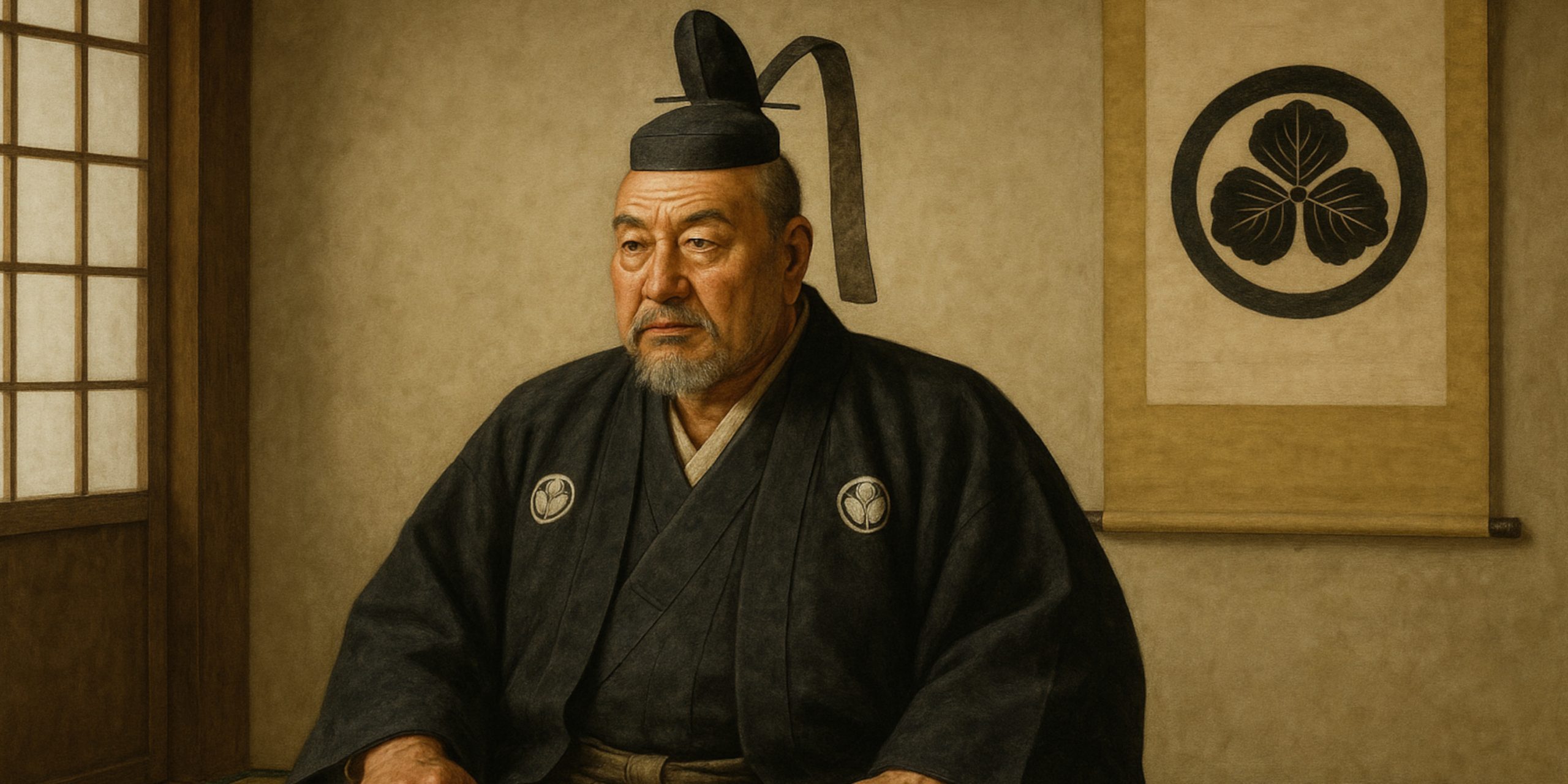
Tokugawa Ieyasu (1543–1616) was the founder and first shogun of the Tokugawa shogunate, which ruled Japan for over 250 years. His leadership reshaped Japanese governance, stabilised a fractured feudal system, and brought an end to the Sengoku period. A skilled tactician and unflinching strategist, Ieyasu was not just a political figure but a battlefield commander whose patient manoeuvring helped unify the country.
Arms and Armour
Tokugawa Ieyasu’s armour and weaponry reflect the transition between traditional samurai warfare and the emerging influence of firearms in Japanese battlefields.
Armour:
- Ieyasu famously wore a suit of tosei gusoku (modern armour) in the okegawa-do style, featuring riveted horizontal iron plates.
- His armour set was often lacquered black with gold accents, symbolising both restraint and authority.
- He favoured practicality and protection over ornamental extravagance, in contrast to more flamboyant daimyos of his time.
Weapons:
- Like most samurai, he wielded a katana, often paired with a wakizashi, forming the daishō.
- He also employed matchlock arquebuses (tanegashima), recognising the growing importance of firearms after their introduction by the Portuguese in 1543.
- His retainers often used long spears (yari) and bows (yumi), the latter still dominant in some of the earlier battles he fought.
Battles and Military Acumen
Tokugawa Ieyasu’s rise was not forged through charisma or reckless aggression but through calculated alliances, defensive posturing, and decisive strikes when the moment was right. His ability to wait, consolidate, and exploit the weaknesses of others marked him as a master of long-term strategy.
Key engagements:
- Battle of Anegawa (1570): Fought alongside Oda Nobunaga against the Azai and Asakura clans. This battle marked Ieyasu’s first major cooperation with Nobunaga, laying the foundation for their alliance.
- Battle of Mikatagahara (1573): A tactical defeat against Takeda Shingen. Despite being forced to retreat, Ieyasu used the loss to harden his defences and learn from his mistakes.
- Battle of Nagashino (1575): Ieyasu supported Oda Nobunaga in the innovative use of firearms to defeat the Takeda cavalry. This marked a turning point in Japanese warfare.
- Battle of Komaki and Nagakute (1584): A drawn conflict with Toyotomi Hideyoshi after Nobunaga’s death. Though inconclusive, Ieyasu proved his military independence.
- Battle of Sekigahara (1600): His defining victory. Outmanoeuvring rivals like Ishida Mitsunari, he secured control of Japan and paved the way for the shogunate.
Ieyasu’s military brilliance lay in avoiding unnecessary risk while positioning himself to benefit from the mistakes of others. He rarely committed to direct conflict without overwhelming advantage.
Where to See Artefacts from His Reign
Many original artefacts tied to Ieyasu have been preserved in shrines, museums, and historical sites across Japan.
Locations:
- Nikkō Tōshō-gū (Tochigi Prefecture): The most important shrine dedicated to Ieyasu, where he is enshrined as a deity. His burial site includes an elaborate mausoleum and museum-quality artefacts.
- Kunōzan Tōshō-gū (Shizuoka Prefecture): The original burial place of Ieyasu. His personal armour, weapons, and war banners are housed here.
- Tokyo National Museum: Exhibits include swords, armour, and administrative documents from the early Tokugawa period.
- Sunpu Castle ruins: The site where Ieyasu spent his retirement and where some excavated items are on display.
Latest Archaeological Findings
Recent excavations and research continue to shed light on Ieyasu’s era and personal legacy.
- In 2019, archaeologists at the Sunpu Castle site uncovered new sections of stone walls and drainage channels, confirming descriptions in Edo-period texts and offering insights into castle engineering under Ieyasu’s direction.
- Research into battlefield layouts at Sekigahara has identified the positioning of key units and possible command posts used by Ieyasu, giving historians a clearer sense of his tactical approach during the decisive campaign.
- Ongoing conservation of artefacts at Nikkō and Kunōzan shrines has revealed intricate craftsmanship in his arms and armour, particularly the layering techniques used in his personal armour to balance flexibility with protection.
The Seven Swords takeaway
Tokugawa Ieyasu remains a towering figure in Japanese history. He was a statesman who grasped the long arc of power. His legacy was not only in the battles he won but in the system he built, one that held together a volatile country for generations. His ability to restrain ambition until the opportune moment, paired with his practical approach to warfare and governance, marks him as one of history’s most durable and disciplined leaders.
Watch the documentary:



